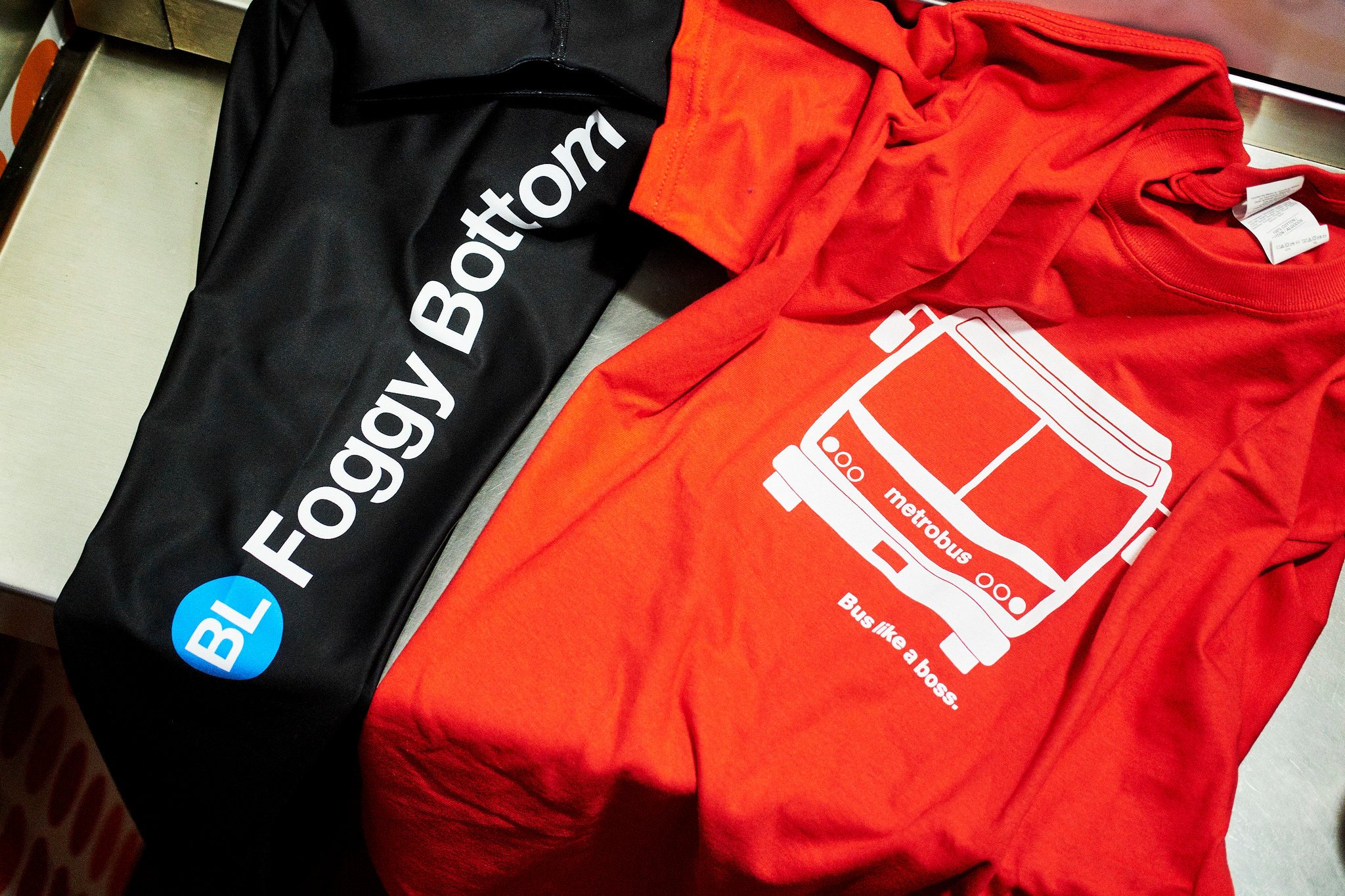
The M Shop’s challenges were summed up this week by a watchdog group, Citizens Against Government Waste. “Failing D.C. Metrorail Opens Absurd Swag Shop,” the group wrote on its website, noting that the crisis-plagued system “has been labeled ‘the worst in the world,’ and its financial situation has been characterized as a ‘death spiral.’”

Credit
T.J. Kirkpatrick for The New York Times
The Twitter account @UnsuckDCMetro, a gathering place for Metro malcontents, lit up. “When you dropping the ‘Sorry for the Inconvenience, We’ll Be Moving Momentarily’ crewneck sweatshirt?” one wrote.
Metro serves the second-highest number of passengers in the nation, after New York. When it opened in 1976, “it was really ‘The Jetsons’ — a futuristic system,” said Jack Evans, a District of Columbia council member and chairman of the Washington Metropolitan Area Transit Authority board, which oversees the system. “Now everything’s 40 years old and it’s really falling apart.”
Some of Metro’s 1970s railcars are still in use. Long-deferred network maintenance has led to breakdowns, track deterioration and multiple disasters, including a 2009 collision that killed nine people. The busiest route, the Red Line, “leaks like a sieve, and whenever it rains, you get puddles and the wires fall into the puddles and they catch fire and you get smoke incidents,” Mr. Evans said. “Nobody wants to hear that.”
There have been some improvements. In 2017, Metro wrapped up a yearlong, $150 million maintenance blitz aimed at bringing its infrastructure back from the brink of collapse. Metro officials say the program, SafeTrack, was successful, and has made the system significantly less dangerous and more reliable.
Still, Metro’s general manager, Paul Wiedefeld, told the board of directors last year that the system needed $15.5 billion in long-term funding just to maintain the subpar status quo.
“We’re on the right track now, but it’s going to take a lot of work and a lot of money,” Mr. Evans said, adding that the District, Maryland and Virginia are nearing a deal to supply $500 million annually in funding to Metro, which is what the transit authority says it needs to improve reliability and safety. Metro’s modest ambitions are summed up by a new slogan: “Back2Good.” Ads trumpeting new railcars say, “They smell better.”

Credit
T.J. Kirkpatrick for The New York Times
Other city subways sell branded merchandise. But Washington’s subway lacks the history, though not the electrical fires, of New York’s. It can’t boast the “Mind the Gap” panache, or the 99 percent on-time rate of London’s Tube, whose former chairman, Tony Ridley, called Metro “so sad.” It can’t top the socialist-realist glamour of Moscow’s Metro, whose “M” logo resembles Washington’s but whose working escalators do not.
Surly commuters heralded the M Shop grand opening with a stream of invective. The Washington Post’s commuter newspaper, Express, had an entire column trolling the M Shop. Caption for the cuff links: “Be careful not to lose these cuff links — if a stray one falls onto a track, it could cause rippling delays throughout the system.”
One critic tweeted a photo of the sparsely attended opening with the caption, “Can I buy some of this standing room to take on the train?”
Jawauna Greene, Metro’s marketing director, tweeted back, “Thanks haters!!! We are making money.”
Making matters worse, M Shop customers must stand in a queue that leads to a gate that leads to a row of ticket windows behind bulletproof glass. Shoppers make choices from a 35-page catalog, but they learned that items on half of the pages were available only online. A staff member relayed the order to other workers in a storage area, who schlepped the goods to the ticket windows, where payment was made through a slot and a feedback-prone intercom. Purchases, packed in a shiny Pop Art shopping bag, were delivered through a door in the barrier.
“I appreciate the sense of humor” of the venture, said Arielle, a 27-year-old federal employee who declined to give her last name because she was shopping during work hours. She laughed at the yoga pants printed with “Foggy Bottom,” a Metro stop near the State Department, but said, “I’m not sure it’s a brilliant idea to walk around D.C. with that on your pants.” Instead she chose a “Stress Reliever,” a squeezable foam replica of a railcar, for $6.95. “Those aren’t available,” the clerk told her.
Arielle rolled her eyes: “That is so Metro, to be out of stress relievers.”
Mr. Evans insisted the shop’s detractors were simply more vocal and that some people were pleased. On his rounds through the city, he said, he had heard from a few satisfied customers — along with the people who say, “‘I got caught in a tunnel and the train caught fire.’”
Continue reading the main story
Powered by WPeMatico

